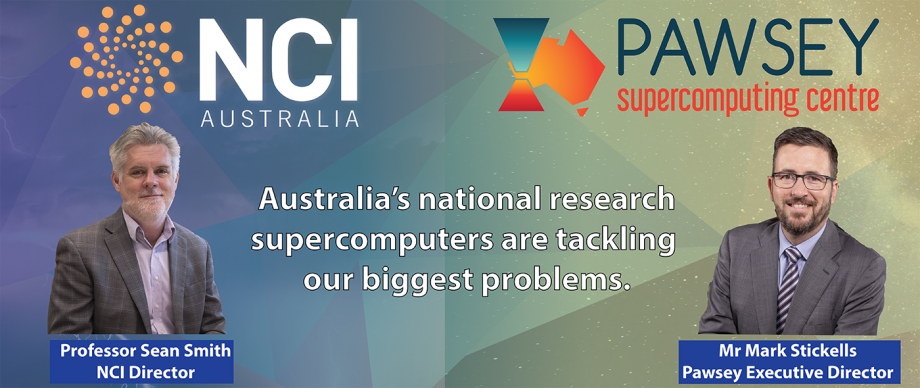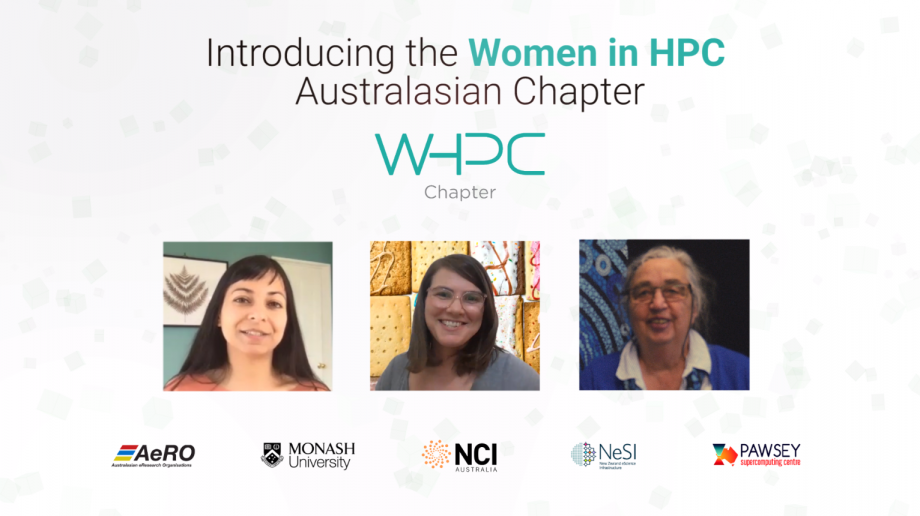The National Computational Infrastructure, based in Canberra in Australia’s east, and the Pawsey Supercomputing Centre, based in Perth in Australia’s west, are the country’s two Tier-1 High Performance Computing (HPC) and High Performance Data (HPD) centres. With a combined computational performance well above 10 Petaflops, data stores over 100 Petabytes in size, and a user base comprising more than 7,000 researchers in universities, national science facilities, medical research institutes and industry partners from around the country, NCI and Pawsey are a centrepiece of the Australian computational science community.
In 2020, NCI and Pawsey have dealt with major challenges impacting the country, our user base, and operations. Most significantly, these include the bushfires that ravaged the country over the summer, the COVID-19 pandemic, and the difficulties that closed national and state borders have created. However, we are used to operating in complex environments, separated by the width of a continent and servicing a growing pool of extremely diverse researchers. NCI and Pawsey support its user communities: from the biggest international research projects to exciting local science happening in universities and research institutes around the country.
This year marked the start of a renewal period for Australian HPC: NCI commissioned and fully launched the 9.3 Petaflop Gadi supercomputer at number 24 on the July 2020 TOP500 list, and Pawsey completed the tender process for their own next-generation supercomputer, due to be delivered between 2021 and 2022; reaching an impressive 50 Petaflops. Both machines include a significant number of GPUs, increased core counts, and the latest generations of CPUs and networking technologies. NCI has opted for the Intel CPU-Nvidia GPU combination and Pawsey will be procuring an AMD CPU-GPU system.
The technologies and performance on offer to Australian researchers has taken a major leap forward this year, and look to keep improving in the not too distant future. All stand in support of the research goals of the Australian scientific community – most notably in the areas of astronomy, and climate and weather science. The Pawsey Supercomputing Centre is the processing hub for the Terabytes of data already flowing in from the Square Kilometre Array (SKA) precursor telescopes: the Australian Square Kilometre Array Pathfinder (ASKAP) and the Murchison Widefield Array (MWA) telescopes in the West Australian Murchison desert. The data volumes will grow at an unprecedented level over the next decade, and Pawsey with its specially optimised system will be the home for the initial processing of this data.
Similarly on the east coast, NCI continues its role as the Australian home for the internationally significant CMIP6 and ERA5 climatology datasets. These datasets contain climate and weather data covering the past few decades, as well as model outputs around future climate out past 2100. Coupling Australian science input into global climate decision-making, the CMIP6 data and the associated processing and analysis it requires all live at NCI.
As the world continues to struggle through a deadly pandemic and changing climate, we were proud this year to join our COVID-19 research efforts with those of a growing collaboration of US and international HPC centres through the COVID-19 HPC Consortium. This kind of global collaboration shows that our scientific potential increases when infrastructure facilities come together, and with a united front, respond, as one, to a major crisis. Research teams around the world are sharing data and expertise in their quest to fight this pandemic.
In the Asia-Pacific region, NCI and Pawsey can together play a leadership role as the local computational community grows. We are already regularly partnering with centres such as NSCC in Singapore and NeSI in New Zealand for conferences, events and training. Out of this relationship came the Women in HPC Australasia Chapter, a local extension of WHPC providing community and mentoring to women and gender diverse people in the field. Watch the WHPC Australasian Chapter launch video on YouTube.
In 2021, the global HPC community will need to continue to collaborate across borders, time zones and disciplines. The online conferences that have replaced the in-person meetings we are so used to will certainly remain for the foreseeable future.
As computational science and novel data analysis methods become even more common place, NCI and Pawsey will continue to be the strategic partners of choice for our ever-expanding community of users.

